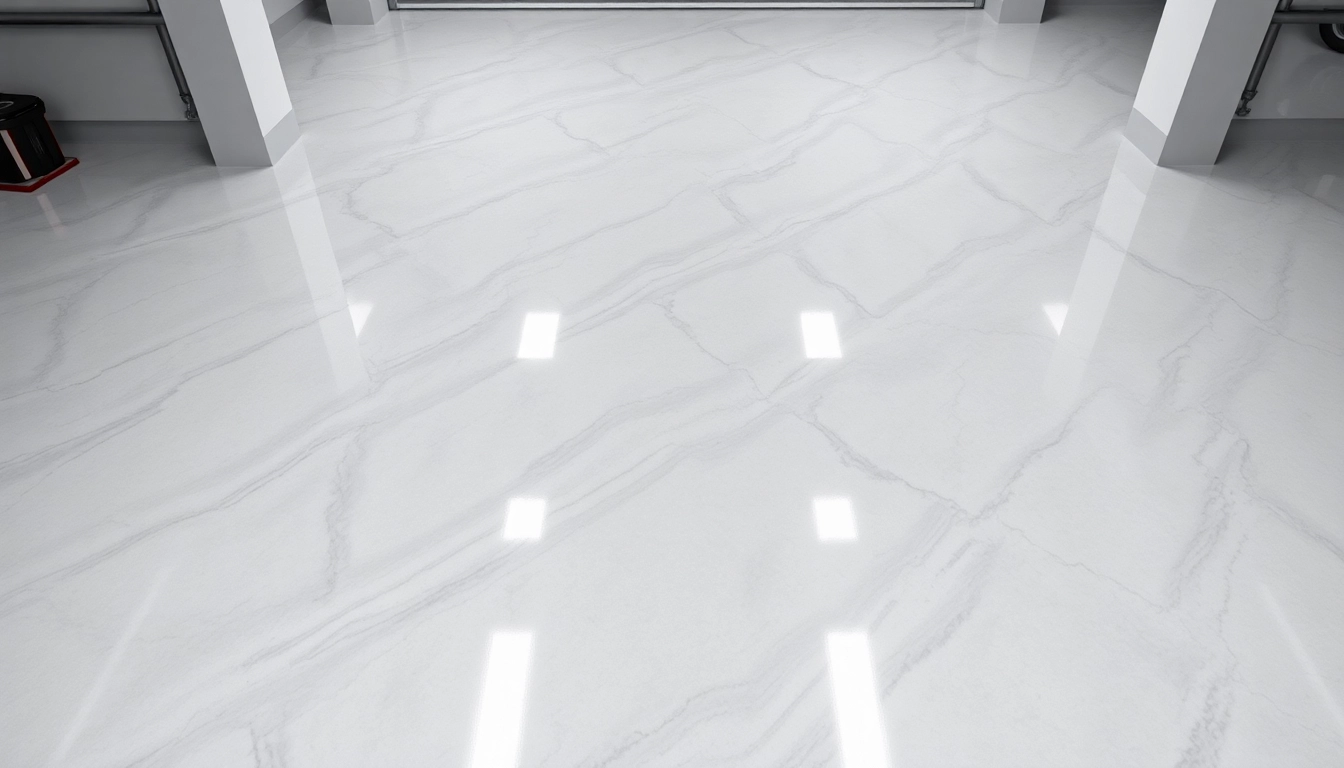Introduction to Epoxy Resin Floors
In recent years, epoxy resin floors have surged in popularity across residential, commercial, and industrial settings due to their exceptional durability, aesthetic versatility, and ease of maintenance. From sleek garage designs to large-scale warehouse flooring, epoxy resin provides a resilient surface capable of withstanding heavy traffic, chemical exposure, and environmental stresses. If you’re considering upgrading your space with a high-performance flooring system, understanding the fundamentals of epoxy resin floors is essential. To explore premium options and professional installation services, visit Epoxy resin floor for expert insights and solutions tailored to your needs.
What is an Epoxy Resin Floor?
An epoxy resin floor is a seamless, durable surface created by applying a two-component epoxy coating to a prepared substrate, typically concrete. The epoxy resin acts as a binder, chemically reacting with hardeners during mixing to form a rigid, high-strength film. These floors are renowned for their exceptional adhesion, chemical resistance, and impressive aesthetic qualities. Depending on the formulation, epoxy floors can be glossy, matte, textured, or patterned, making them adaptable to a wide array of design preferences and functional requirements.
Key features include high resistance to abrasion, impact, and chemical spills, alongside low porosity, which reduces dust and bacterial accumulation. This makes epoxy resin floors ideal for environments where hygiene and longevity are critical, such as laboratories, hospitals, kitchens, and manufacturing facilities.
Common Applications and Environments
The versatility of epoxy resin floors allows them to serve multiple sectors efficiently. In commercial kitchens and food processing plants, their seamless surface minimizes bacterial harboring and facilitates easy cleaning. Industrial warehouses and factories benefit from their chemical resistance and durability, providing a resilient surface that withstands heavy machinery and forklifts. In garages and driveways, epoxy floors combine aesthetic appeal with robustness, resisting oil stains and road salts.
Residential settings also leverage epoxy for basement conversions, home gyms, and decorative interior flooring. Additionally, epoxy coatings are frequently used in retail spaces, airports, and sports facilities where high foot traffic and safety standards demand long-lasting, slip-resistant surfaces.
Advantages Over Traditional Flooring
Compared to traditional concrete or tile flooring, epoxy resin offers numerous advantages:
- Durability: Epoxy floors are highly resistant to scratching, impact, and wear, extending service life substantially.
- Chemical Resistance: They withstand spills of oils, acids, and solvents without corroding or staining.
- Seamless Finish: The monolithic surface eliminates grout lines or joints where dirt and bacteria can collect, enhancing sanitary conditions.
- Ease of Maintenance: Regular sweeping and mopping are sufficient, reducing cleaning time and costs.
- Design Flexibility: Custom colors, textures, and patterns unlock endless aesthetic possibilities.
These factors combined make epoxy resin floors a cost-effective, high-performance solution for demanding environments seeking longevity and visual appeal.
Design Options and Aesthetic Potential
Color, Texture, and Finish Choices
One of the most appealing features of epoxy flooring is its customization potential. From vibrant solids to subtle neutral shades, epoxy pigments can be adapted to match branding or interior decor. Texture options range from high-gloss to matte, and even textured finishes that provide slip resistance. Special additives like quartz or aluminum oxide can create a gritty surface for safety in wet areas, while metallic pigments produce mesmerizing, swirling patterns for a high-end look.
Creating Custom Patterns with Epoxy
Advanced techniques such as chip layering, flake applications, and stenciling enable designers and homeowners to craft unique bespoke floors. These patterns can discretely incorporate logos, geometric designs, or artistic motifs, transforming an ordinary surface into a statement feature.
Inspirational Examples of Epoxy Resin Floors
Take inspiration from shows and portfolio galleries where epoxy floors mimic marble, terrazzo, or even abstract art. For instance, a garage with metallic epoxy creates a futuristic appeal, while a commercial lobby with a custom logo embedded into the glossy surface communicates prestige and professionalism.
Step-by-Step Installation Process
Surface Preparation and Cleaning
Proper surface preparation is critical. The concrete must be thoroughly cleaned, free from dust, oil, and existing coatings. Mechanical roughening through shot blasting or grinding ensures optimal adhesion, removing laitance and creating a profile that anchors the epoxy. Moisture testing and repair of cracks prevent future delamination.
Mixing and Application Techniques
Accurate mixing of epoxy components is vital. Typically, two parts resin and hardener are combined according to manufacturer instructions. Using a roller or squeegee, the mixture is applied in even coats, starting with a primer if necessary. Multiple layers might be required for proper thickness and performance, with each coat curing for specified times. Advanced techniques include decorative flake or metallic overlays, applied after initial layers cure.
Curing and Final Finishing Touches
Curing times vary but generally span from 24 to 72 hours. During this period, environments should be kept dust-free and moisture-controlled. A clear topcoat may be applied to enhance gloss and chemical resistance. Once cured, the surface is inspected, and edges are beveled or sealed as necessary.
Maintenance and Longevity Tips
Cleaning and Upkeep
Regular sweeping removes dust and debris, while damp mopping with mild cleaners maintains the surface’s shine. Avoid harsh chemicals and abrasive tools that could damage the epoxy. Protective mats and furniture pads also safeguard against scratches.
Repairs and Touch-Ups
Minor scratches or chips can be repaired with compatible epoxy paste or resin coating. Cleaning the area, sanding lightly, and reapplying the patch ensures seamless integration. For extensive damage, sanding and resealing might be necessary.
Ensuring Durable and Long-Lasting Floors
Preventative measures, such as controlling environmental humidity during curing and avoiding heavy impacts, extend the lifespan. Routine inspections help identify early signs of wear, allowing timely interventions.
Cost Considerations and Choosing the Right Products
Budget and Pricing Factors
The cost of epoxy resin floors depends on surface area, complexity, and quality of materials. Basic kits may start around $60 per gallon, suitable for small projects, while professional-grade, industrial formulations can cost upwards of $300 per coating. Additional expenses include surface prep tools, primers, topcoats, and labor costs if applicable.
Types of Epoxy Resins and Additives
Resin types vary by formulation—standard epoxy for general use,epoxy with enhanced chemical resistance for industrial settings, and UV-stable epoxy for outdoor applications. Additives like pigments, flakes, or reductants influence aesthetics, while fillers improve slip resistance or impact durability.
Finding Reliable Suppliers and Brands
Opt for reputable suppliers with positive reviews, comprehensive technical data sheets, and good customer support. Leading brands such as Rockhard USA and EPODEX provide proven formulations with extensive technical support, ensuring successful project outcomes.



